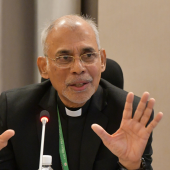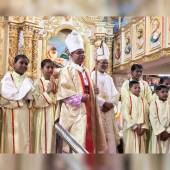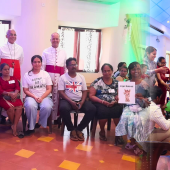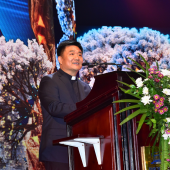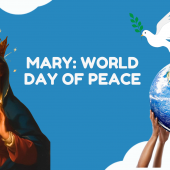Opinion: The Hijab Controversy
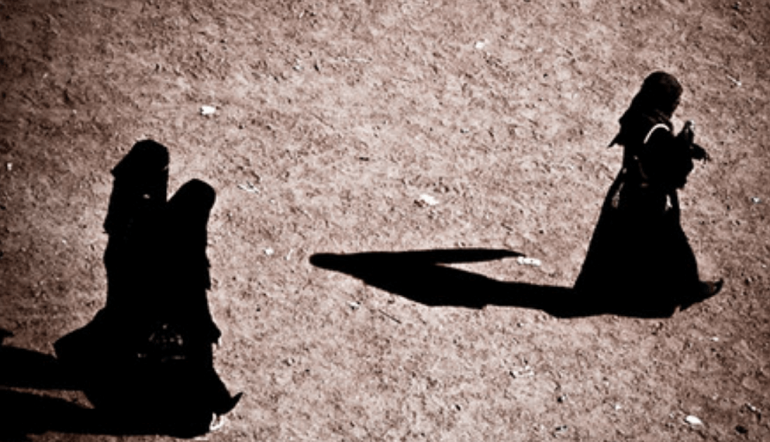
Dr. Rosemary Varghese reflects on the recent Hijab Controversy to navigate the communal division India recently faces right from school settings in the educational institutions to the political propaganda of the fringe groups. She recalls nostalgic memories of yesteryears of children of different faith communities who grew with a sense of friendship. Dr. Varghese proposes a holistic approach where each can feel safe, respected, and treated with dignity.
The hijab controversy surfaced in the small town of Udupi, in the Southern Indian State of Karnataka during the last week of December 2021. The New Year was marred by the ensuing disputes that remain smoldering angrily in the lives and hearts of the student community who were embroiled in this unfortunate episode.
For those who have not followed the story, the incident happened at the Mahatma Gandhi Memorial College, where six girls belonging to the Pre-University (PU) program were prohibited from entering their class because they had worn the ‘hijab,’ a religious head-dress used by Muslim women.
The college authorities claimed that it went against the prescribed uniform of the institution. At the same time, the students countered this, saying that this was a newly introduced rule that was politically motivated. As an immediate reaction to this incident, several Hindu students sporting saffron shawls demanded that they wear religiously symbolic attire, clearly drawing communal battle lines. The protest continues to drag on, and this institution in Karnataka shot into fame for all the wrong reasons.
Spreading the disharmony across the country
An unfortunate outcome of the incident at Udupi was that it sparked similar protests in Gujarat, Kerala and other states of India. The political parties on both sides of the religious divide made maximum use of the opportunity by delivering hate speeches and harnessing scores of students to express their allegiance to their respective religions through violence and rank indiscipline.
The damage caused by these thoughtless acts extends far beyond political, religious and educational boundaries. After experiencing this wave of expressed hatred, how would teenagers view their classmates? Wouldn’t the hijab or the saffron scarf, as the case may be, determine their relationship with the other? Incidents like these strike at the heart of exalted educational institutions, turning them into hotbeds of political and religious rivalry.
What is required for a healthy social culture in educational institutions?
When we witness these ugly incidents that are becoming the norm in India in the past few years, we cannot help spending a few nostalgic moments to remember our PU days. Nobody cared if the student at the next desk was Ann, or Anjali or Afzal. They were all included to share those carefree days of fun and friendship.
Admittedly, studies did not always come first. The age between sixteen and seventeen spreads out in so many directions. Just out of the protective nurturing of parental custody, it is a time when one reaches beyond caste, creed and gender to enjoy common interests, and share lighter moments with classmates.
It was a time when only tiffin boxes could be identified as Hindu, Muslim, or Christian depending on their goodies. The irresistible aroma of a mutton biriyani, the tangy taste of spicy chutney with dosa, the audacious red fish curry with mashed tapioca identified each student’s lineage as clearly as the hijab or the saffron scarf. And yet they only served to spread shared happiness and camaraderie among those who generously helped themselves from the lunch boxes of the others.
Academic goals of a PU program
From an institutional viewpoint, a pre-university program has educational goals that are quite distinct from programs at other levels of education. Fresh from school, students have two short years to decide where their interests lie and what line of specialization they should take up in college to prepare themselves for a career of their choice. Academically, this is a difficult decision for most students, and the institution has a primary responsibility to guide the students to make the right choices. To achieve this, the institution must be a centre of academic excellence, one that brings forth and nurtures the best in the students to understand their potential and compete globally to achieve their goals.
The need for holistic education
Along with academic targets, the institution must essentially create a multicultural ambiance that remains impervious to distinctions that render students unequal by any yardstick. Inequality cripples the minds of perpetrators and victims alike. In this case, religious differences among students are being manipulated by political activists. They are brainwashed into believing that they are carrying out a divine purpose by attacking their fellow citizens. Being vulnerable and immature, students become tools in the hands of nefarious powers with vested interests and agendas that are divisive and potentially dangerous to the sovereignty of India as a nation.
Divine justice
If we believe in divine justice, then we can be sure that a day will come when these manipulators will have to answer for misguiding scores of young teenagers who are denied their right to an educational environment that promises their own space, respect and dignity. In this context, we are reminded of the poem entitled “Where the mind is without fear” by the great Indian poet and visionary Rabindranath Tagore, where he expresses his yearning for a world “ that has not been broken up into fragments by narrow domestic walls.” As children of one God, the Creator of this Universe, and as proud citizens of India, let us join this celebrated poet in prayerful hope for the country of our forefathers:
Where the mind is led forward by Thee
Into ever-widening thought and action
Into that heaven of freedom, my Father
Let my country awake
Views expressed in this article are those of the author and do not represent the editorial stand of Radio Veritas Asia and its patrons.
Radio Veritas Asia (RVA), a media platform of the Catholic Church, aims to share Christ. RVA started in 1969 as a continental Catholic radio station to serve Asian countries in their respective local language, thus earning the tag “the Voice of Asian Christianity.” Responding to the emerging context, RVA embraced media platforms to connect with the global Asian audience via its 21 language websites and various social media platforms.









